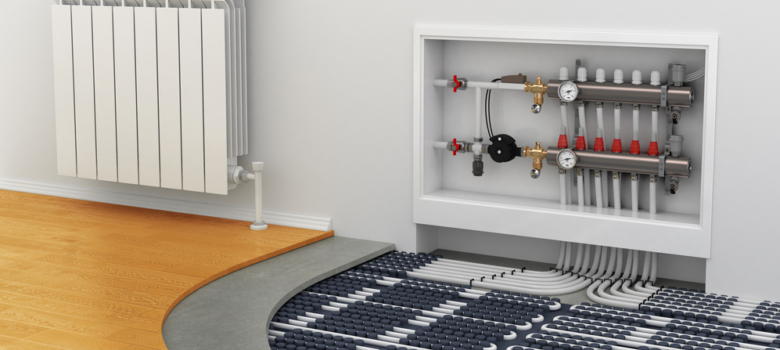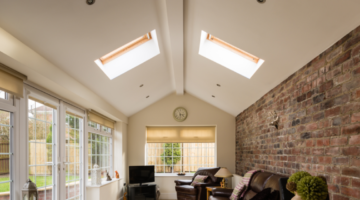
Underfloor heating is a popular option for homeowners who like a nice toasty floor in the mornings, usually in the kitchen or bathroom. It can be costly to install, but underfloor heating works really well with stone/tile flooring. It’s also a pretty efficient way to heat your home due to the fact that there is an even dispersal of heat throughout the entire room, because the underfloor heating will heat up a larger area than just a singular radiator.
Underfloor heating works on the simple basis that heat rises. Indeed, in some cases high quality underfloor heating can actually mean doing away with conventional radiators altogether – this means a heating system that is comfortable, easy to use, and much more spatially efficient. Retrofitting is expensive and laborious so the best time to install underfloor heating is generally while you are having other work done that involves taking up the floors. This is also why it’s so often chosen for new build properties.
Where did it all begin?
Many people are unaware of the fact that underfloor heating actually has a long history dating back to around 5,000 BC – even then humans loved having warm feet.
The Greco-Roman hypocausts were basically an early form of underfloor heating. These worked by circulating hot air underneath the floors of the rooms, sometimes with a network of pipes within the walls which the hot air also circulated through. Roman hypocausts consisted of raised flooring using stacks (or pillars) around which the hot air from the furnace circulated.
It was a good concept but they were massively labour intensive to run, because the heat came from a furnace which needed constantly fueling. As a result they were mostly installed in larger villas or in public baths. The remains of roman hypocausts have been dotted throughout Europe.
Modern types of underfloor heating
Electric underfloor heating systems:
Electric underfloor heating is basically a network of wires underneath your flooring that heats up and radiates low heat into the room. When it comes to underfloor heating systems, insulation is key. You would first need to lay down a layer of insulation to prevent the heat from being lost under the house. Electric underfloor heating systems can be relatively inexpensive to install as you can buy special matts which are laid down uniformly before tiling – roll out and go. The other option is to go for individual wires which can be quite a bit more pricey.

Water underfloor heating systems (hydronic):
Water underfloor heating systems consist of pipes that are connected to your boiler and are laid underneath your flooring. Most boilers are gas boilers, so installing the water underfloor heating system would mean cheaper running costs – if you’re one of the few people who’s boiler runs off electricity, then you may as well go for the electric option. Alternatively, they can be run via a Ground Source Heat Pump or an Air Source Heat Pump.
The only issue with water underfloor heating systems is that they are trickier to install and would require a professional for installation, which would hike up prices. It’s really a matter of balancing out the costs depending on the size of the room – is it worth installing water underfloor heating for a tiny bathroom? Probably not, but it may be worth it for a larger open plan space.
Think we missed something? Do you have a different opinion?
Comment below to get your voice heard…












No Comments yet! Be the first one.